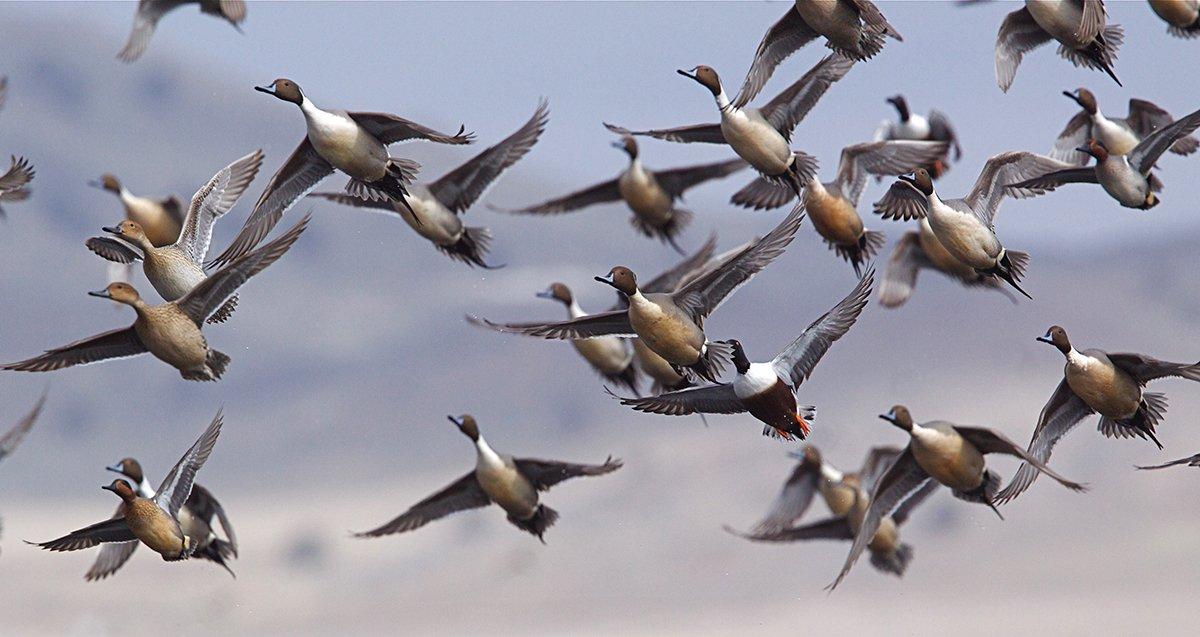Mallards, greenwings, wigeon, scaup up; pintails, bluewings down
North America's Spring 2016 breeding duck numbers remained solid despite concerns about dry conditions across critical breeding areas, according to U.S. Fish and Wildlife Service data released Wednesday.
The FWS' 2016 Trends in Duck Breeding Populations, based on surveys conducted in May and June by the agency and the Canadian Wildlife Service, estimated total breeding duck populations at about 48.4 million birds. That's down slightly from the 2015 estimate of 49.5 million ducks but 38 percent higher than the long-term (1955 to 2015) average. Mallards increased 1 percent to an estimated record 11.79 million birds, which is 51 percent higher than the long-term average.
The duck numbers are amazingly good, Dr. Frank Rohwer, president of Delta Waterfowl, said in a press release. Mallard numbers are especially surprising and show why they are the most abundant duck in the world. They adapt to conditions exceptionally well.
Scott Yaich, chief scientist for Ducks Unlimited, concurred.
In light of the dry conditions that were observed across much of the northern breeding grounds during the survey period, it is reassuring to see that the breeding population counts were little changed from last year, he said in a press release. But, with total pond counts similar to the long-term average, and with hunting season and winter mortality being a relatively small part of annual mortality, it's not surprising to see that populations largely held steady.
Scaup posted the largest percentage gain in breeding population estimates, with about 4.99 million birds; an increase of about 14 percent from 2015, placing scaup numbers right at the long-term average. Green-winged teal numbers increased to a record estimate of almost 4.28 million from 4.08 million in 2015, or about 5 percent, which is 104 percent higher than the long-term average.
American wigeon fared well, increasing 12 percent to about 3.41 million birds from almost 3.04 million in 2015, which is about 31 percent higher than the long-term average. And breeding redhead numbers jumped to an estimated 1.29 million ducks from about 1.20 in 2015, an increase of about 8 percent and 82 percent higher than the long-term average. Gadwalls and canvasbacks held fairly steady, each decreasing by about 3 percent, with estimated numbers of about 3.71 million and 736,000, respectively. Those numbers put breeding gadwall and canvasback numbers about 90 and 26 percent higher than their long-term averages, respectively.
Pintails suffered a fifth consecutive year of decline, falling to an estimated 2.62 million in 2016 from about 3.04 million in 2015 — a decrease of about 14 percent, with breeding numbers 34 percent lower than the long-term average.
It's really clear that pintails overflew the prairies, Rohwer in the Delta release, adding that pintail breeding numbers in southern Saskatchewan decreased by about 60 percent. Pintails and bluewings didn't find the seasonal and temporary wetlands they prefer for breeding, so much of the population did not settle in the prairies. When pintails overfly the prairies, production is always down.
Breeding blue-winged teal also declined, dropping to about 6.69 million ducks in 2016 from an estimated 8.55 million in 2015, a decrease of about 22 percent. Their numbers remain 34 percent higher than the long-term average, however. Likewise, northern shovelers decreased by about 10 percent, dropping from about 4.39 million in 2015 to 3.97 million in 2016. Still, spoonies remain 56 percent higher than the long-term average.
The total pond estimate for 2016 was about 5.01 million, which was 21 percent lower than the 2015 estimate of 6.3 million but similar to the long-term average of 5.2 million. That's important because wetland and upland habitat conditions are widely considered to be the main determining factor for breeding duck success.
What's not reflected in the report is that there was fairly significant improvement in habitat conditions after the surveys were completed, Yaich said in the Ducks Unlimited release. In some key production areas, heavy June and July rains greatly improved wetland conditions. This could benefit brood rearing and the success of late-nesting species, as well as give a boost to overall production through re-nesting by early nesting species.
Rohwer said in the Delta release that the lower pond counts and drier conditions will probably result in average duck production and fewer juvenile birds in the fall flight. Younger ducks comprise a large portion of hunter harvest and are generally easier to decoy.
We'll be hunting flocks with more adult ducks in them this season, but the flights should be strong, he said in the release.
Click here for more Realtree waterfowl hunting content. And check us out on Facebook.







